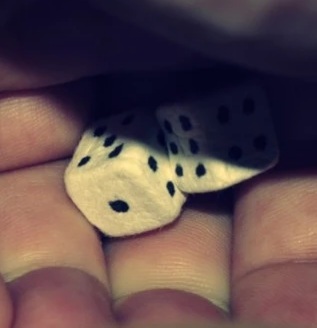I was busy keeping track of Black Tentacles and Crushing Despair’s effects so I forgot about the second save for creatures who critically fail against Phantasmal Calamity, which could have stopped the two standing PCs from reviving the two downed PCs and led to a complete TPK. Just one of them failing the save would have guaranteed a dead party member, and they only had about a 20% chance each to succeed. After that they would have had to roll a 19 or 20 to escape the illusion thanks to their debuffs, which they’d need to get on their first attempt or lose both of the downed party members.
And now one of my players has pointed out Black Tentacles has been upgraded to Slither in the remaster so they should have been even more killed. With an extra 2d6 damage plus persistent poison every round I could have absolutely tpk’d them. This is so fucking upsetting. They should have all died and had to make new characters and the paladin player forced to write the backstory on why the help he requested took so long to arrive 
i just wanna kill PCs and everyone said this AP would kill loads but I trained my players too well and now I missed my chance to kill them aaaaaaaAAAAAA 


About a decade ago I was in the same boat, until I played Paizo’s We Be Goblins oneshot and we completely fucked up by starting the final fight in the worst possible position, leading to a TPK that made perfect sense with the story so far and had us falling out of our chairs laughing. With a little inspiration from a statblock I saw online I threw together a oneshot system that specifically intended to end each session by killing all the player characters, and ran it with my group several times to great success.
You consider a TPK a failure of GMing because to you, a TPK is a mistake - a misbalanced encounter or overly punishing consequences - that unintentionally and prematurely ends a story, but properly used it’s a storytelling tool that intentionally progresses the plot and creates new events and options. In the context of my campaign, this was the second encounter and first of several combats with the final boss, that happen long before the party have any way to win the fight, nevermind permanently destroy her. She’s such an extreme threat that PF2e’s encounter building guidelines don’t have a name for it. The encounter should have demonstrated her monstrous power by not only killing some or all of the party, but by killing them with the lingering effects of her spells after she had already left, but because I forgot the second save I completely failed at that. Every death in that fight would not only have reinforced her role as the BBEG after having been little more than a rumour over the last year of play, but also itself been the backstory of a whole new character - the mother who comes out of retirement to avenge her daughter’s death, the aging priest who must undertake one final task for his god, the blacksmith that feels a sense of duty to those who once protected him.
Certainly TPKs can be a failure of GM, but like with many things it’s entirely dependent on the context of your table, system, and story, and thinking it’s always a failure of GMing misunderstands storytelling.
If your intent as a group of players is to TPK, then obviously that’s not a failure. (If you don’t TPK with Paranoia for example, you dun fucked up.)
But if you’re playing just an ordinary game without explicitly stating in advance that TPKs are the goal, it’s a failure of GMing, IMO.
So you agree it’s contextual. Why mention it at all then? You’re not one of my players, you didn’t attend our session zero, what context do you have that makes your comment relevant to the situation?